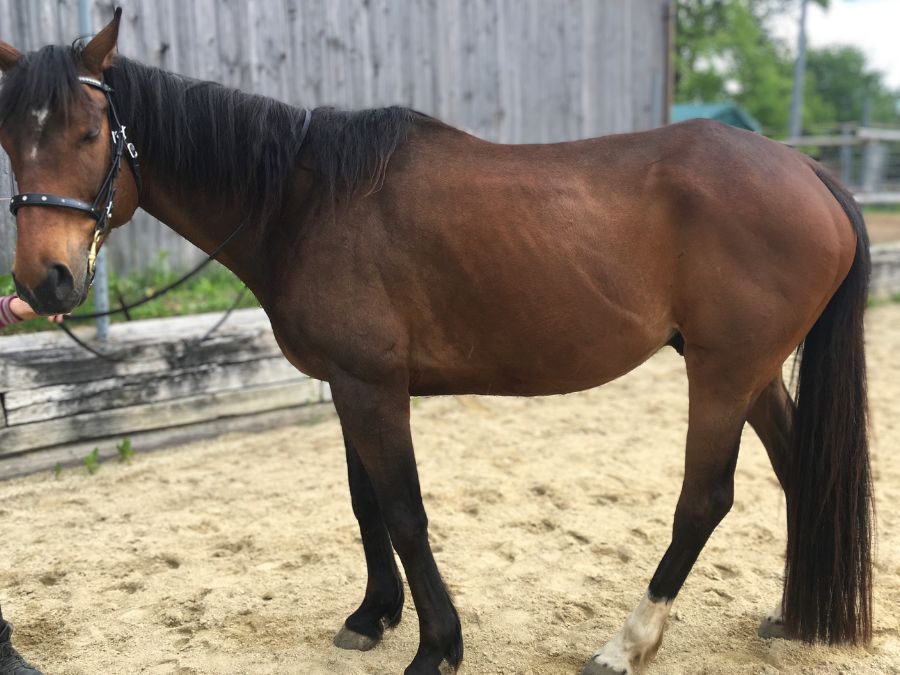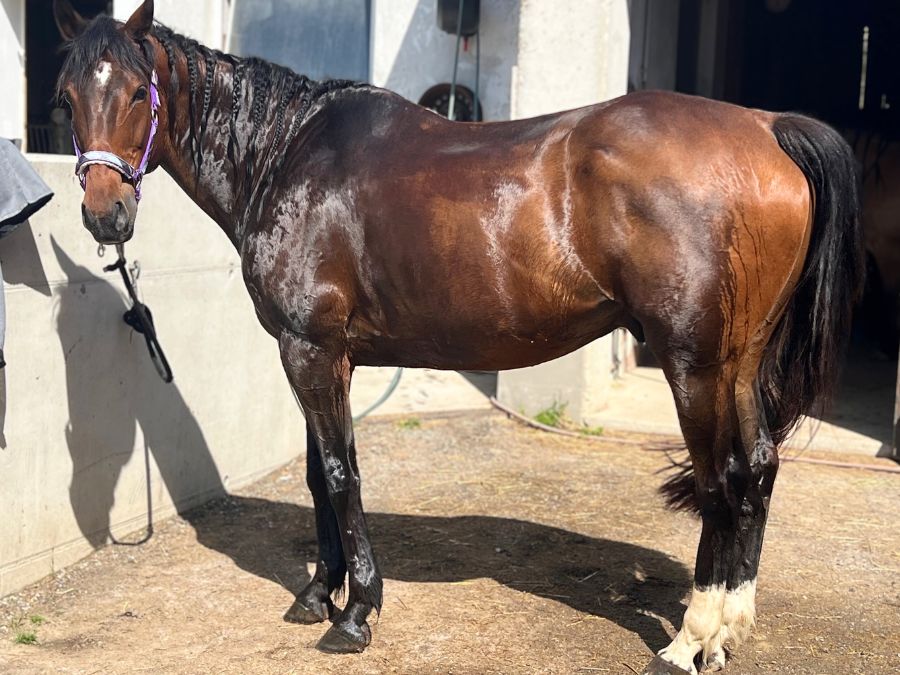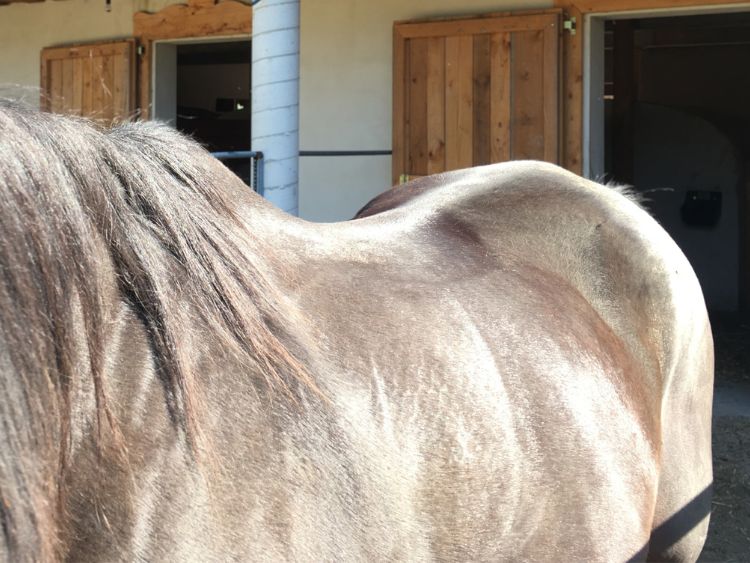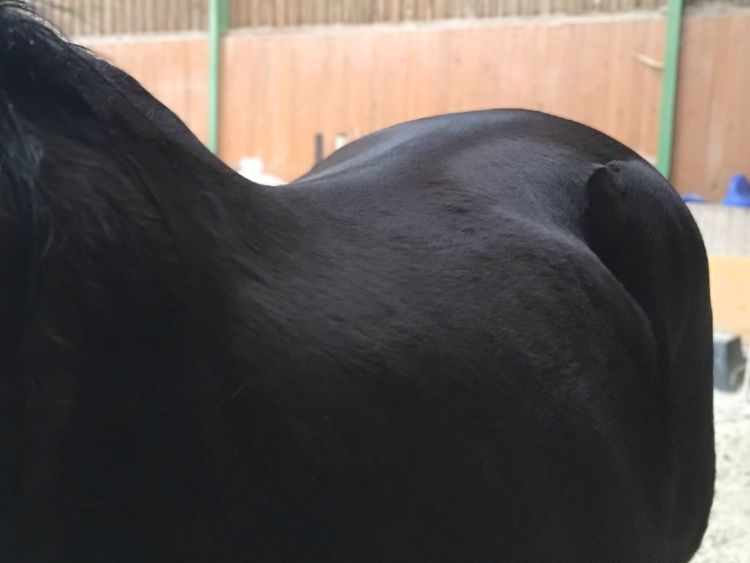
Further case studies
Straightness
Correction of crookedness, even muscling and rideability on both hands by working with the spinal rotations.
Gelding Cody
Rescue horse from the racetrack
Breed: Thoroughbred
Age at start of training: 9 years
Customer: Owner Angelika Wagner
Lesson interval and adjustment of the training plan: every 12 weeks

Before
High degree of crookedness, pre-bending in the forehand, symptomatic kissing spine findings and training-related impurities in the rhythm – caused by the previous owner’s reckless riding style and unphysiological movement patterns.
The horse could only stand in this leg position.

After Equisensomotoric® training
Significantly improved skewness and muscle status through regular Equisensomotoric® training and feed optimization.
Gelding Degas
Breed: Hanoverian
Age at start of training: 19 years
In cooperation with:
Equine orthopaedist Dr. med. vet.
Peter Kübber and
Vetchiropractic Mag. vet Katharina Bosch
Customer: Owner Dr. Adelheid Kienzl
Lesson interval and adjustment of the training plan: every 2 weeks

Before
Tension and protruding sacroiliac joint caused by crookedness and unsuitable saddle.

After Equisensomotoric® training
Six months later, the croup already appears much rounder and fuller

Before
Under-muscled, pronounced crookedness, kissing spines and arthrosis on all legs.
The horse had previously been lame almost continuously for almost ten years and was unable to trot or canter either on the lunge or in the saddle when training began.

After Equisensomotoric® training
The horse can finally trot, canter and be ridden again.
The crookedness has improved significantly and the horse has muscled up well thanks to regular training and feed optimization.
Play the video by clicking on the image ↑
After Equisensomotoric® training
Canter change on a loose rein, here 24 years old
Prehistory
In 2000: born without findings
7 year old: Grand Prix “fully trained”. However, Degas refused many dressage competitions due to high rearing and was then sold to another dressage rider – but even after a year off on turnout only, he continued to rear and additionally was lame on the left front
10-year-old: His current owner buys Degas as a leisure horse – kissing spines were discovered during the purchase examination regarding the lameness on the left front. This is followed by a long medical file with several tendon damages and a wide variety of findings, such as arthrosis on all legs as well as various therapeutic approaches and multiple injections into the back and tendons.
17-year-old: The veterinarian who had been treating him for many years recommended Degas’ final retirement at the time. His owner doesn’t give up and over the next two years tries out a variety of training methods to help her horse.
19-year-old: At this point, Degas’ back is under-muscled, sunken and severely twisted, and he can’t manage a single trot step or canter jump, even on the lunge. After starting training with Equisensomotoric® Training in collaboration with Dr. Peter Kübber, daily step work in the hand and in the saddle by the owner according to the training plan. After a few months, the first trotting steps are possible.
20 years old: steady trot and first canter attempts are possible
21 year old: Springy trot and supple canter, Degas surprisingly offers flying changes again
24 years old: Given his daily condition, Degas can still be ridden and is ridden daily in all gaits and with flying changes on both hands. Due to his age, he now shows a delay on days with weaker circulation in the left hindleg or steps a little shorter in the left frontleg. However, even then the reach with the left frontleg is still better than 14 years ago.

